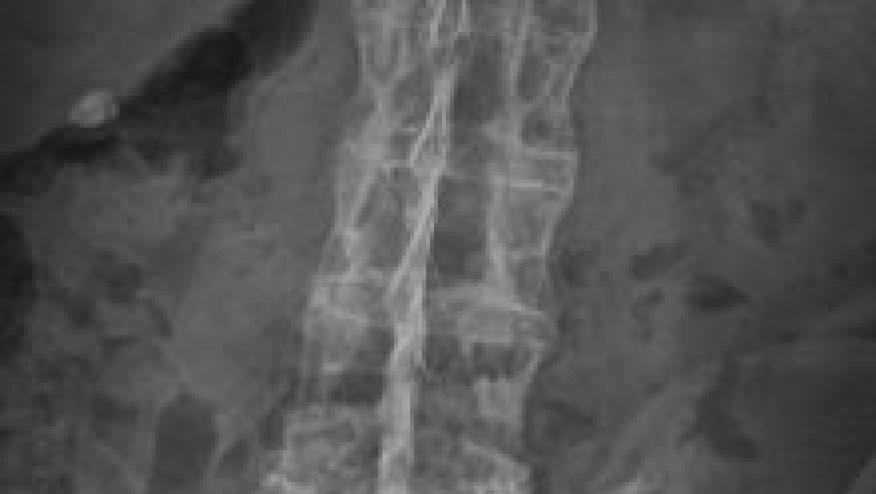Spinal X-ray Inhibition in Ankylosing Spondylitis Best Achieved by Control of Activity Save

Although tumour necrosis factor inhibitors (TNFi) are highly effective (on clinical grounds) in ankylosing spondylitis (AS), proof that they may alter the course of spinal radiographic progression has been scant. That's primarily because of the insidisous nature of the disease, comparatively slow progression and difficulties in imaging and scoring the sacroiliac and axial joints.
AS patients in the Swiss Clinical Quality Management cohort were followed 10 years with radiographic assessments and modified Stoke Ankylosing Spondylitis Spine Scores (mSASSS) every 2 years. These findings were correlated with drug use and clinical status assessed by the Ankylosing Spondylitis Disease Activity Score (ASDAS).
X-ray progression was defined as an increase in ≥2 mSASSS units in 2 years. In these 432 AS patients the mean (SD) mSASSS increase was 0.9 (2.6) units in 2 years.
Prior use of TNFi reduced the odds of progression by 50% (OR 0.50, 95% CI 0.28 to 0.88).
While a direct effect of TNFi on X-ray progression could not be claimed (OR 0.61, 95% CI 0.34 to 1.08), the indirect effect, by reducing the ASDAS was statistically significant (OR 0.75, 95% CI 0.59 to 0.97).
These data suggest that control of disease activity with TNFi use may reduce the risk of spinal radiographic progression by 50% in AS patients.







If you are a health practitioner, you may Login/Register to comment.
Due to the nature of these comment forums, only health practitioners are allowed to comment at this time.